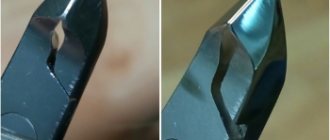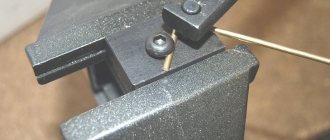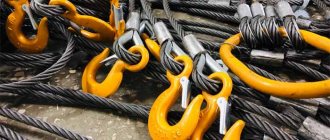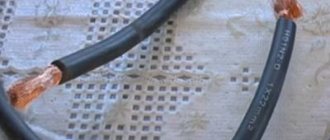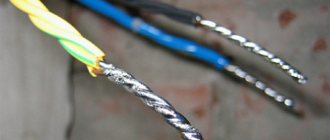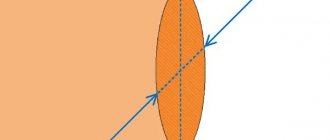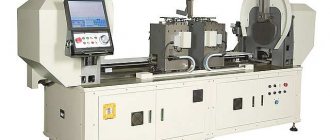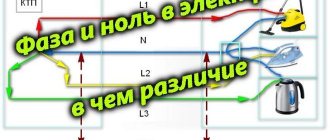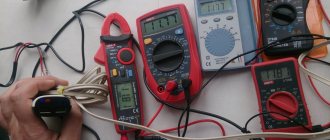A good handyman always has a variety of different tools at home, each used for a specific task. One of the most famous tools is end cutters or any other type. People often talk about the purposes for which this tool is used, and almost everyone already knows its main purpose.
Any wire cutter is used primarily for cutting wire. The basis of the tool's operation is the principle of leverage. With the help of the best cutters, you can reduce the amount of effort required when cutting various materials to a minimum. It turns out that you don’t have to put in almost any serious effort to cut the wire.
It will not be possible to do without this tool if there is a need to make small cuts, for example, on plastic.
Often, without tools, it will not be possible to perform installation/disassembly of any equipment.
If you have, for example, side cutters at home, then without any special physical effort, you can cut any wire yourself without any problems.
In order to quickly cope with such a task as cutting a cable, you only need to keep the main wire as close as possible to the hinges of the tool.
Why do we need wire cutters?
The main purpose for which cable cutters are used is to cut wires and wires or other components. They are also needed when it is necessary to make small cuts in metal or plastic during installation or dismantling of equipment. This tool can easily cut wires of any diameter, but not too large. In order to make the work easier, when cutting the wires, you need to keep them very close to the hinges of the cutters. Basically, two types of nippers are used in work: side and end .
For side cutters, the handles are always located in the same plane as the cutting edges or jaws; a small angle is possible between them. These cutters also have a second name – side cutters. When the cutting edges are perpendicular to the planes of the handles, the tool is called an end cutter. If we compare the design of wire cutters with scissors, we can note that the main difference is in the interlocking cutting jaws. Nippers vary in shape and size. If you need to cut very thick wires, then you need to use professional power cutters. Such tools have a second name - bolt cutters.
Features of the instrument
Regardless of which type of nippers was chosen, the tool will definitely have certain parts.
- Sponges equipped with cutting arms.
- Screw type lock. Available on double/single models.
- Handle with additional stops.
- Spring.
If you look at the instructions on how to sharpen wire cutters, you will definitely see a special lock there. It is necessary to connect all working parts with the existing jaws. The lock has an additional design.
How to find good metal cutters?
A quality instrument has several special features that are sometimes obvious to us. For example, there should be no dents, burrs or nicks, and the cutting edges should always touch very closely along the entire length. It is also important that the cutting edges do not overlap each other. Screw locks on an instrument can be detachable, but this is rare, or permanent... But you should pay attention to something else! They can be single-hinge or double-hinge (these are often double-gear locks). Double-hinged ones can reduce the forces that develop on the handles.
It will also be useful to know that the presence of a return leaf spring allows you to automatically return the working edges to their original position immediately after the pressure is stopped.
When making wire cutters, care is taken to ensure that they are not only safe, but also comfortable. To achieve this, tool handles often have an insulating winding. This allows them to be used as an electrical installation tool for working under high voltage. Based on the presence of insulating materials, instruments are divided into insulating and insulating. The insulated handles have a special coating of materials that ensure safety. Insulating tools are made entirely of insulating materials and have metal cutting inserts.
Special cutters
One of the most famous varieties of this tool are bolt cutters. They are used to quickly bite through the rod. An important point: the thickness of the rod in this case should not be more than 1.2 cm.
Another popular type of special cutters are tools that are actively used by craftsmen when it is necessary to cut small electronic parts. They are distinguished by a mirror surface, open neatly, and are also always equipped with an additional device that can remove static electricity if necessary.
Speaking about how to choose wire cutters, it is noted that the above-mentioned point is definitely worth paying attention to during the purchase.
How to use wire cutters?
When using this tool, you need to know some rules and features. Metal cutters are installed on the elements being cut or bitten, usually at an angle of 90 degrees. There is no need to be zealous while working; the device, both in the initial position and when performing work, must always be in a free grip, otherwise unwanted forces may occur on the cutting blades. Be sure to monitor the cutting and movement of the tool while working.
If the device moves in a direction that is not safe for people, then you must immediately release the handle or simply turn it in a different direction. If you need to cut massive elements, and this could be beams or hinges, then it is better to do the work in a recess; it is often provided in the cutting part of the tool. During operations, the cutting parts must be closed, and if they diverge, the work is suspended, otherwise a breakage may occur in the jaws of the pliers. When cutting massive elements with large tools, you need an assistant who will support or move the bitten elements to a safe distance.
Application
Assembly side cutters are used both in households and in professional activities. In the latter case, we are most often talking about performing electrical work that involves cutting wires, cables, and thin metal bars. Also, reinforced side cutters with long jaw lengths are often used in metalworking workshops, where they are subjected to very high loads during production activities. In general, wire cutters, as such a tool is also called, are universal and are used in all areas of human work.
Design Features
Since this tool is used to cut material, its selection should be made based on the requirements for performing this function. There are two main elements in the design of the cutters:
- handle for easy handling of the tool;
- cutting lumps, which are also called sponges.
The type of cutters is determined by such design parameters as the shape of the cutting edges, the features of their location, and geometric dimensions.
The following types of pliers are distinguished according to the location of the cutting edges and purpose:
- End jaws - jaws are located perpendicular to the surface of the handles.
- Side cutters, otherwise called side cutters, are characterized by the location of the jaws at a small angle to the handle or on the same plane with it.
- Power cutters (bolt cutters) – used for working with metal rods.
As a rule, to ensure electrical safety, the handles of this tool are made using insulating material. The wire cutters for electrical work have high-quality insulation to protect your hands from electric shock. Based on the design of the handle, there are two types of electrical wire cutters: insulating and insulated.
The difference between these types of handles is that the coating of insulated cutters is made of dielectric, and for insulating type products it is additionally equipped with cutting inserts. By design, the handles are lever guides; their surface does not wrinkle or slip under the hand, and is resistant to moisture, technical oils and substances with high chemical activity.
Characteristics
The main characteristic of the tool is the length of its jaws. As a rule, mini side cutters have blades that are 10-15 mm, which is quite enough for stripping wires and similar products. But the best side cutters, which are intended for processing large objects, can have a jaw length of 25-30 mm.
In addition, you need to know what material they are intended for. The most common are professional side cutters, which are used for cutting non-ferrous and ferrous metals from which objects of small thickness are made. On the high-quality tool market, you can also find side cutters for plastic, which have a specific shape of cutting edges that allows them to avoid leaving burrs and other defects. Very often, consumers are offered specialized side cutters for radio installers, which are intended mainly for carefully stripping wires and contacts on electronic devices. When working with such devices, dielectric side cutters are often used, whose protection against electric current has a dual purpose. On the one hand, it allows you to avoid electric shock to the installer, and on the other hand, it avoids the effects of static electricity on electronic components, for which it is often destructive.
If we delve further into the description of side cutters for highly specialized types of work, then it is necessary to mention devices that can work with metal of a fairly large thickness. Lever side cutters are equipped with a special handle, which allows you to significantly increase the pressing force, and, accordingly, the pressure at the cutting point. Power side cutters, as they are also called, are often used when cutting metal busbars used in electrical engineering. A very popular modification for professional use are carbide side cutters, which make it possible to ensure maximum durability even with intensive use. In addition to them, there are also side cutters with pobedit overlays, for which even carbon steel is not a problem. However, in general, you can rely on GOST - side cutters, according to it, must be made from high-quality solid tool steel.
For electronics, side cutters can be equipped with special devices that provide translational movement of the blade (“ratchets”), which allows you to limit the depth of cut and interrupt work at any moment. A similar device can be equipped with side cutters for stripping insulation from small wires. Diagonal cutters are also designed for precise work - however, they can also work with materials of low density and hardness
If you need high-quality side cutters, the price of which provides the opportunity to save money, you should use the catalog of the Anchor24 online store to purchase them.
